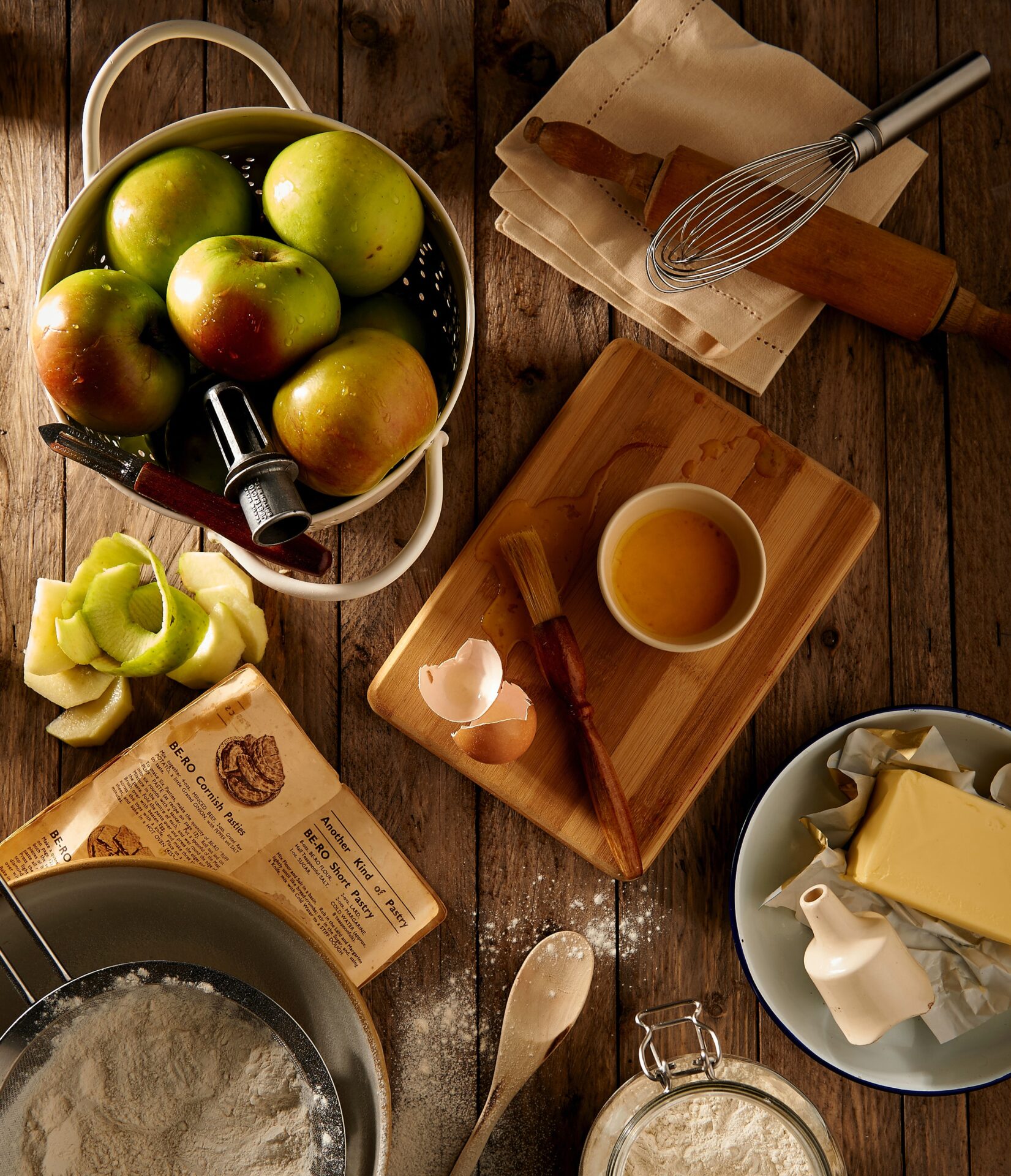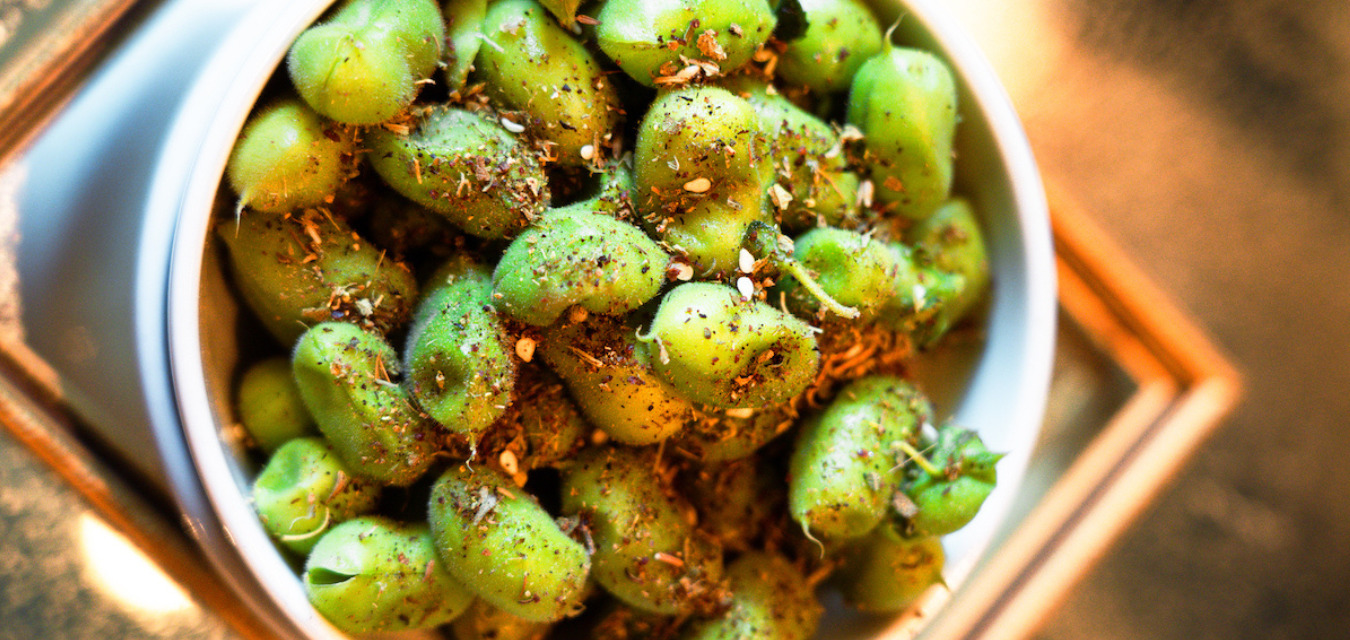In its youngest form, the chickpea presents a range of flavor

The chickpeas most of us know and love come either dried or canned, the cream-colored knobs acting as a versatile protein to whiz into hummus or fry lightly for a crispy salad topper. But rare is it to find the chickpea, a legume that has been grown and consumed in the Middle East for thousands of years, in its original form—still green and in the shell—due to the crop’s fleeting season.
“Fresh off the vine, it has this nutty, earthy, full-rounded flavor,” says Martha Wilcox, chef de cuisine of Indianola restaurant in Houston. “We blanch them quickly and serve them in the shell, so you eat them like edamame,” she says. “Shelled green chickpeas are also great for adding into pastas and sautés, and they are fun to use in place of regular green peas.”
You can usually find them at Middle Eastern markets, but Wilcox sources hers from farms around Texas for the menu at Indianola, which she calls “modern Texas.” “Our goal is to help show the blending of the many different groups that call Texas home—you have the German, Irish, and Czech populations, plus the northern state of Mexico, large Cajun influence, and a huge Vietnamese base. It’s exciting to work with items from so many different cultures.”
For this play on edamame, she blanches green chickpeas before folding them into a housemade za’atar blend, which she makes“regional” with Mexican oregano. “We serve this in the springtime as a light snack. You have your drinks, you have your chickpeas, and you just kind of snack as you’re deciding where you want to go for the rest of your meal.”
Green Chickpeas with Za’atar
share
trending content
-
Get To Know Roanoke, Virginia
-
Shrimp and Grits: A History
by Erin Byers Murray -
New Myrtle Beach Restaurants Making Waves
-
FINAL VOTING for Your Favorite Southern Culinary Town
-
New Restaurants in Arkansas
More From Key Ingredient
-
Sweet Talk: The Sensuous Power of Local Honey
-
Caramel Delights
-
Jason Stanhope’s Famous Celery Salad
-
Little Bursts of Summertime
-
A Better Butter Bean









